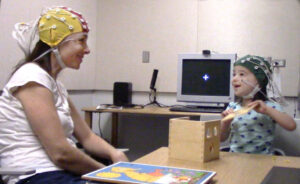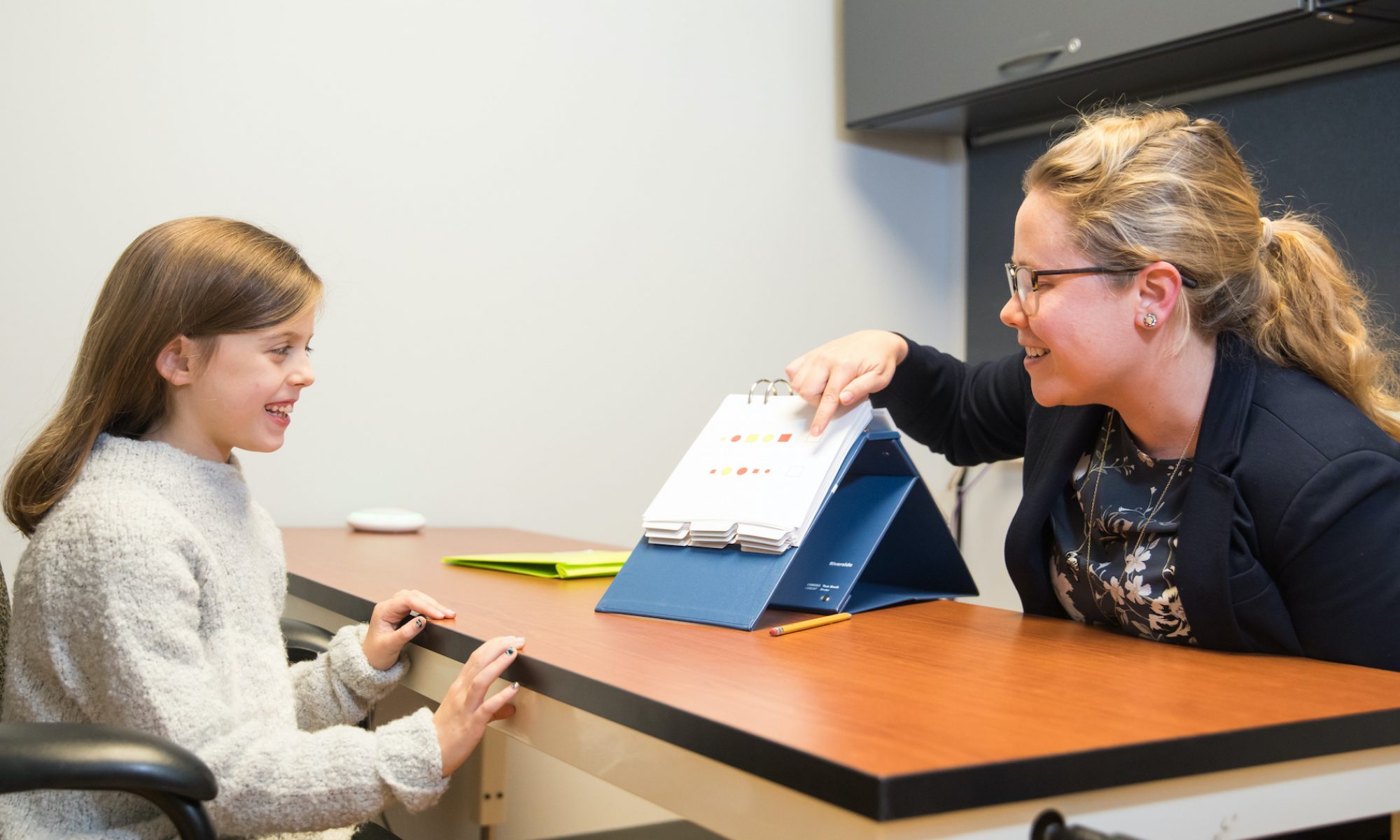We are excited to share some of the findings from the When to Worry (W2W) study. We couldn’t do this without our study families!
If you are a participating family ready for your next study visit, please email w2w@northwestern.edu or text us at (872) 225-2929.
If you would like a free copy of any of the full papers, click the link in the paper title or email us.
FINDINGS ABOUT LANGUAGE DEVELOPMENT
Manning et al. (2019): Relations between toddler expressive language and temper tantrums in a community sample.
Children age 1-3 who have more irritability and temper tantrums also have lower language skills. Children who are late talkers at age 2 have almost twice the chance of having frequent and severe temper tantrums. Both irritability and late talking can be a sign of problems later on for some children. This means that we need to screen children who have high irritability for language delays and children with language delays for irritability.
LaTourrette et al. (2023): From word recognition to word learning: Comparing online speech processing in typically developing and late-talking 2-year-olds.
When 2 Worry included an eye-tracking task at age 2. This means we used a computer to see where a child was looking as they watched a video about new words and familiar words. We compared children who were late talkers to peers who were typical in their talking. We found that the late talkers had challenges or delays in processing words they know, and in quickly grasping and integrating new words into their vocabulary compared to typically developing children of the same age. These results provide valuable insights into early language development and may contribute to strategies aimed at supporting children who face challenges in language acquisition.
NEW METHODS FOR UNDERSTANDING CHILD DEVELOPMENT
Norton et al. (2022): Social EEG: A novel approach to studying brain-behavior links and brain-to-brain synchrony during naturalistic toddler-parent interactions. 
Families in the W2W study complete the “Social EEG” activity. Most studies of children’s brains have them look at things on a computer screen or listen to certain sounds over and over. We wanted to find a way to for parents and children play and interact together naturally while we record their brainwaves. We were one of the first groups in the world to do this! In this paper, we describe this method to study how children’s brain relates to their behavior and how we will study the similarities between children’s and parent’s brains. This will provide us a whole new way of studying the developing brain.
ASSESSMENT USING ZOOM/VIDEO CHAT
Krok et al. (2022): Using animated action scenes to remotely assess sentence diversity in toddlers.
This paper describes a new method where we used animated action scenes for charting children’s language development. We assessed sentence diversity, an important way to see not just how many words children can say, but if they can use lots of nouns and verbs flexibly together. We showed that these fun animated scenes we showed on zoom were a helpful way of evaluating language abilities in young children remotely. Other researchers can now use this as a way to assess children’s language. We will also use this information to help predict which toddlers in the study showed strong language skills at age 4.
Manning et al. (2020): Taking language samples home: Feasibility, reliability and validity of child language samples conducted remotely with video chat versus in-person.
Just as the COVID-19 pandemic was beginning, we used an existing set of data to help us figure out ways to collect information about children’s language even though we couldn’t have visits in the lab. A common way to chart children’s language is through language samples, meaning we carefully transcribe all the words that a child says while they play with their caregiver. Here, we showed that it is possible and we get good data when we conduct child language samples remotely via video chat compared to in-person. This has opened up a whole new way of collecting data that is convenient for families.

